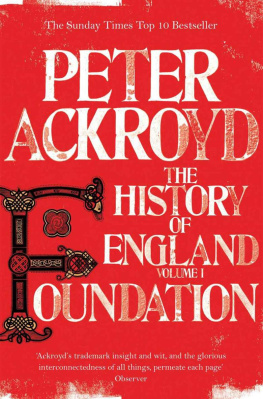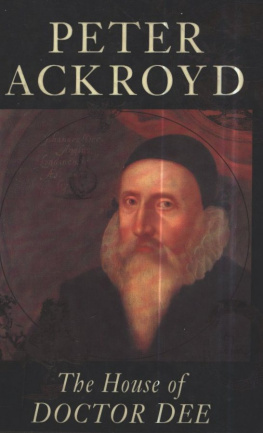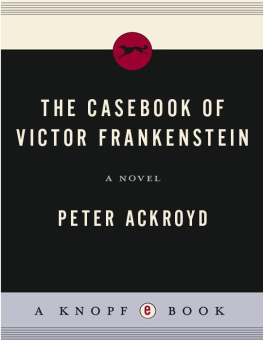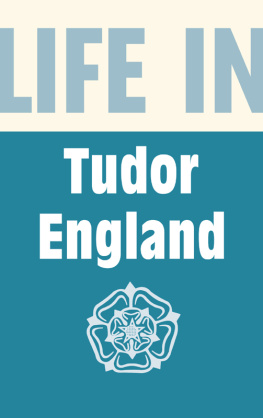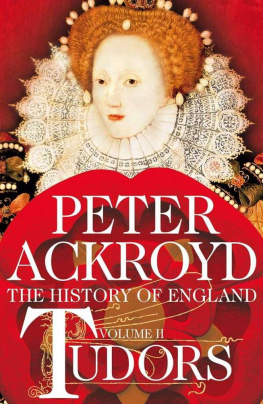
Contents
List of Illustrations
Hymns of stone

When the first sarsen stone was raised in the circle of Stonehenge, the land we call England was already very ancient. Close to the village of Happisburgh, in Norfolk, seventy-eight flint artefacts have recently been found; they were scattered approximately 900,000 years ago. So the long story begins.
At least nine distinct and separate waves of peoples arrived from southern Europe, taking advantage of warm interglacial periods that endured for many thousands of years; they are races without a history, leaving only stones or bones as the evidence of their advance and retreat. Against the wall of a cave of the Gower Peninsula has been found the body of a man laid down 29,000 years ago. His bones were stained with a light patina of red, suggesting either that they were sprinkled with red ochre or that his burial garments were deeply dyed. He also wore shoes. Around him were various items of funereal tribute, including bracelets of ivory and perforated shells. His head had been removed, but his body had been placed in alignment with the skull of a mammoth.
He was young, perhaps no more than twenty-one, but in that far-off time all men and women were young. He was clearly some kind of clan leader or tribal chieftain. At the beginning of the human world, a social hierarchy already existed with marks of rank and status. The cave in which he was interred was visited by many generations, but we do not know what secrets it contained. The people whom he represented passed from the face of the earth.
Only the last of the arrivals to England survived. These people came some 15,000 years ago and settled in places as diverse as the areas now known as Nottinghamshire, Norfolk and Devon. In a Nottinghamshire cave the figures of animals and birds were carved 13,000 years ago into the soft limestone ceiling; the stag and the bear, the deer and the bison, are among them.
Generations passed away, with little or no evidence of change. They persisted. They endured. We do not know what language they spoke. Of how or what they worshipped, we have no idea. But they were not mute; their intellectual capacity was as great, or as small, as our own. They laughed, and wept, and prayed. Who were they? They were the forebears of the English, the direct ancestors of many of those still living in this nation. There is an authentic and powerful genetic pattern linking the living with the long dead. In 1995 two palaeontologists discovered that the material from a male body, found in the caves of Cheddar Gorge and interred 9,000 years ago, was a close match with that of residents still living in the immediate area. They all shared a common ancestor in the maternal line. So there is a continuity. These ancient people survive. The English were not originally Anglo-Saxon or Celtic; they were a prehistoric island people.
The study of prehistory must also be the study of geography. When the settlers arrived in England, 15,000 years ago, the North Sea was a great plain of lakes and woodland. It now lies submerged, rich in the unseen evidence of the past. Yet we can in part rescue that which has been lost. Oak woods, marshes covered by reeds, and open grasslands covered the land. It was a warm and humid world. Red deer and voles inhabited the landscape; but they shared it with elephants and macaque monkeys. Among them wandered groups of humans, twenty-five or more in each group, pursuing their prey. They fired upon the animals with flint arrowheads, and used carved reindeer antlers as axes; they carried wooden spears. We do not know how they were organized but the discovery of butchery sites, where tools were manufactured and food prepared away from the main settlements, suggests a measure of social control.
We can still see the people walking towards us. On the sand at Formby Point, on the north-west coast of England, there are human footprints continuing for 32 feet (9.75 metres). The prints of many children are among them. The men were approximately 5 feet and 5 inches in height (1.55 metres), the women some 8 inches shorter (20 centimetres). They were looking for shrimps and razor shells. Footprints are found in other parts of England. Some appear on the foreshore of the Severn estuary; they fade away at the point where, 7,000 years before, the dry land became swamp. Now, on the flooding of the tide, they are gone.
These are the prints of what have been called Mesolithic people. The term, like its counterparts Palaeolithic and Neolithic, is loose but convenient. These people cleared the woods and forests by burning, in order to make way for settlements or to render the hunt for game more effective. Pine was also burned to make way for hazel, whose autumnal nuts were a popular source of food; they knew how to manage their resources. The early English have been called hunter-gatherers, with dogs employed for hunting, but their life was not that of undisciplined nomadic wandering; their activities took place within well-defined boundaries. They ranged through group territories that adjoined one another. They liked the areas where land and water meet.
Some 11,000 years ago a great lake covered what is now the Vale of Pickering in Yorkshire. On the bank of this lake was built a platform of birch wood. It might have been used to expedite fishing, but it is more likely to have been a site of ritual ceremonial; the people wore amber beads, and left behind the bones of pig and red deer, crane and duck. A round house has also been discovered, 11.5 feet in diameter (3.5 metres), that has been dated to approximately 9000 BC ; it was constructed of eighteen upright wooden posts, with a thick layer of moss and reeds to furnish a sleeping area.
Its inhabitants used barbed antler points, flint knives and scrapers; they started fires by means of iron pyrite. The house itself seems to have possessed a hearth. They used canoes to travel over the lake; one paddle has been found, but no craft is now visible. It has disintegrated through time. But there are survivals. At this site, known as Star Carr, were discovered twenty-one fragments of deer skull, some of them still with antlers. Were they a form of disguise for hunting? More likely, they were part of a shamanistic covering to enter the spirit of the deer. It might have been an early form of morris dancing, except that the numinous has now become simply quaint.
The Mesolithic English lived in settlements such as that found at Thatcham in Berkshire; the modern town itself is in fact the latest version of human community on the same site. Some atavistic impulse keeps habitations in the same place. 10,000 years ago the people lived on the shore of a lake. Burnt bones, burnt hazelnuts and patches of charcoal used for fires, were found; here, in other words, was all the panoply of daily domestic life. Cleared spaces represented the floors of small huts. The first English house was made of flexible saplings, bent over and covered with hides. It measured approximately 20 feet by 16 feet (6 metres by 4.8 metres).
Hundreds of other such settlements existed, many of them in coastal regions that now lie upon the seabed. The coasts were once between 70 and 100 feet (between 21 and 30 metres) higher than their present level and, as the seas rose, so the settlements were lost in the deluge. We may never know very much more about the Mesolithic English because their remains are beneath the waves. One submerged village came to light when some divers peered into a burrow made by a wandering lobster off the Isle of Wight; the crustacean was flinging out pieces of worked flint. A settlement of craftsmen and manufacturers, as well as hunters and fishermen, was then revealed. A wooden pole, with a flint knife embedded in it, was rescued from the waters. A canoe was found, carved from a log. The remains of structures like houses could clearly be seen. They were workers in wood as well as in stone. This is part of the lost English world under water.
Next page
